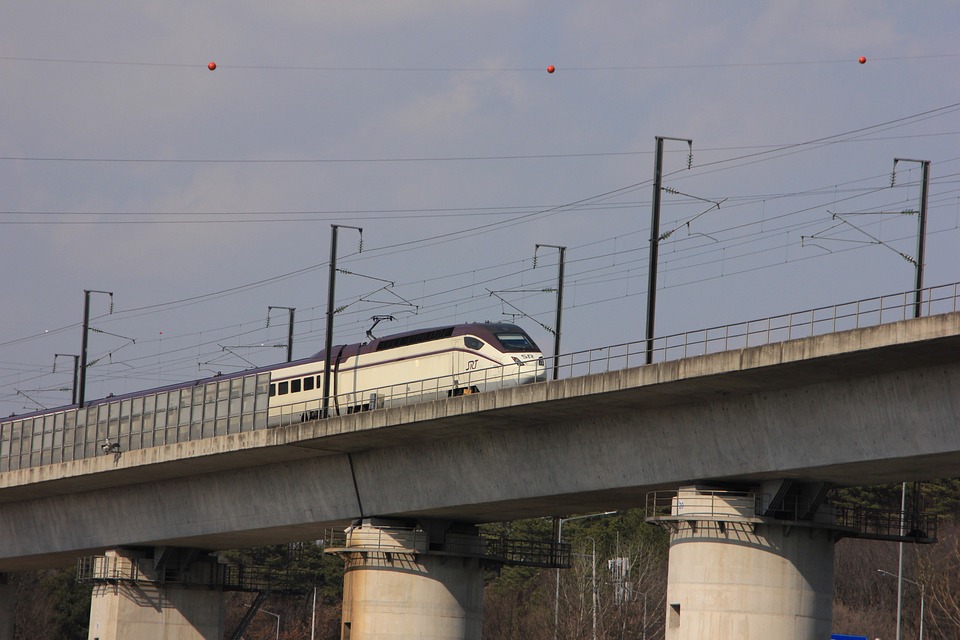High-Speed Trains vs. Air Travel: Which Is the Better Option?
Introduction
In today’s fast-paced world, travel options are abundant. High-speed trains and air travel are two popular modes of transportation for long-distance journeys. Both have their advantages and disadvantages, but which is the better option overall? In this article, we will compare high-speed trains and air travel in terms of speed, cost, comfort, convenience, and environmental impact to determine which is the superior choice for travelers.
Speed
When it comes to speed, high-speed trains are typically faster than airplanes for shorter distances. High-speed trains can reach speeds of up to 200-300 km/h, allowing passengers to reach their destination quickly and efficiently. On the other hand, airplanes have the advantage for longer distances, as they can travel at speeds of up to 900 km/h, cutting down travel time significantly. So, if you are traveling a short distance, a high-speed train may be the better option, but for longer distances, air travel is the quicker choice.
Cost
Cost is an important factor to consider when choosing between high-speed trains and air travel. In general, high-speed trains tend to be more expensive than airplanes for shorter distances. However, for longer distances, high-speed trains can be more cost-effective, as there are often no additional fees for baggage and amenities that are typically charged by airlines. Additionally, high-speed trains often offer discounts for early booking, making them a more affordable option for budget-conscious travelers. On the other hand, air travel can be more expensive due to added fees and taxes, making high-speed trains the better choice for those looking to save money on transportation costs.
Comfort
When it comes to comfort, high-speed trains have the upper hand over air travel. High-speed trains offer spacious seating, ample legroom, and the ability to move around freely during the journey. Additionally, high-speed trains have onboard amenities such as Wi-Fi, dining cars, and lounges, making the journey more enjoyable and relaxing. On the other hand, airplanes can be cramped and uncomfortable, with limited legroom and space to move around. The noise and turbulence experienced during flights can also make air travel less comfortable than high-speed trains. Overall, high-speed trains provide a more comfortable and enjoyable travel experience for passengers.
Convenience
Convenience is another important factor to consider when choosing between high-speed trains and air travel. High-speed trains are often more convenient for short-distance travel, as they depart and arrive from city centers, eliminating the need for additional transportation to and from airports. Additionally, high-speed trains have fewer security checks and boarding procedures, allowing passengers to board quickly and easily. On the other hand, air travel can be more time-consuming and inconvenient, as passengers have to arrive at the airport early for security checks and boarding procedures. Additionally, airports are often located outside of city centers, requiring additional transportation to reach the final destination. In terms of convenience, high-speed trains offer a more streamlined and hassle-free travel experience for passengers.
Environmental Impact
The environmental impact of high-speed trains vs. air travel is an important consideration for eco-conscious travelers. High-speed trains are considered a more environmentally-friendly option than air travel, as they produce fewer emissions and consume less energy per passenger. High-speed trains run on electricity, which can be generated from renewable sources, making them a more sustainable mode of transportation. On the other hand, airplanes emit a significant amount of greenhouse gases and consume large amounts of fuel, contributing to air pollution and climate change. In terms of environmental impact, high-speed trains are the more sustainable choice for travelers looking to reduce their carbon footprint.
Conclusion
In conclusion, both high-speed trains and air travel have their advantages and disadvantages, but which is the better option? High-speed trains are faster, more cost-effective, more comfortable, more convenient, and more environmentally-friendly than air travel. They offer a seamless and enjoyable travel experience for passengers, making them the superior choice for most travelers. However, if you are traveling long distances, air travel may be the quicker option. Ultimately, the choice between high-speed trains and air travel depends on the specific needs and preferences of the traveler.

Leave a Reply